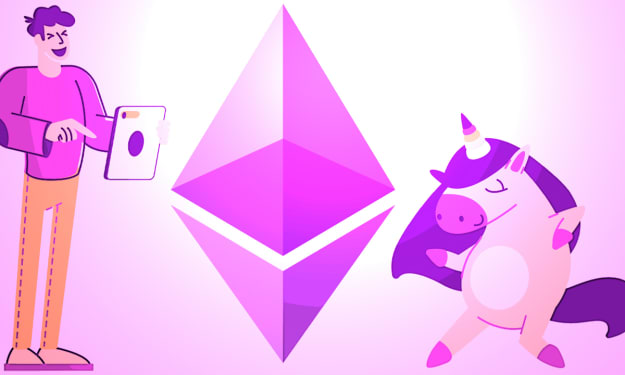
Polkadot has drawn the attention of many users because its blockchain is a much more scalable and efficient network than the infrastructure leader, Ethereum.
If Bitcoin and Dogecoin found their rivals within the blockchain universe, Ethereum has found its rival with the appearance of Polkadot . It offers a much more scalable and efficient development environment that allows different blockchains to interconnect and become an unparalleled cross-chain development hub.
The origins of Polkadot
That Polkadot comes to rival Ethereum is not by chance. The creator of the project, Gavin Wood , was part of the Ethereum development team. So he knows his strengths and weaknesses like no one else. Ethereum's programming language, Solidity , was created by him.
On January 11, 2016, he decided to abandon the project and create his own in search of overcoming its weaknesses such as scalability and enabling new cross-chain or inter-chain operating structures. In October of the same year he presented his white paper.
The project was funded by his own company, Parity, and the Web3 Foundation . Both parties were referents within Ethereum. But their resources were limited because they were inside Ethereum.
The Initial Coin Offering or ICO was held between October 15 and 27, 2017 and managed to raise 143 million dollars .
But a Parity hack caused him to lose 90 million dollars within the Ethereum network development. Given this, they decided to ask for support to carry out a hard folk and recover the funds blocked in the network by the hack.
The move received harsh criticism and the community opposed taking an action like the one that followed the hack of The DAO in 2016. They feared it would lead to a new incision in the community. However, the funds are still locked in the well-known Parity Bug , and there seems to be no way to get the money out of there.
What is the difference with Ethereum?
Wood was looking to solve all the weaknesses of Ethereum in Polkadot. Therefore, I create a whole new technology and consensus protocols to achieve this.
First, Polkadot seeks to operate across heterogeneous networks that can connect . For this you need two key functions:
As a data transmission and processing chain: Receive information from other chains, process it and send it to the source chain
Standalone operation by creating your own chains: Chains with their own capabilities such as support for running smart contracts or tokens. Allowing the native operation of decentralized applications or DApss and token to take full advantage of the network
This to become a scalability option for networks like Ethereum development and other cryptocurrencies. In addition to interconnecting different ecosystems in different blockchains on the same network.
Relay Chains and Parachains
Sharding is a computer technique that divides the main chain and the network into various subchains and subnets attached to it . This gives each chain its own blockchain history, nodes, and all the infrastructure for its operation.
The subchains in Polkadot are called parachains , which can be seen as a sidechain or secondary chain , where its own blockchain instance is executed . In this way you have all your history, your own capacity and calculation power to meet your needs.
The Relay Chain is the main chain of Polkadot, and it exists under the union of the history of all the parachains that run in parallel within the network . This organization makes it possible for Polkadot to execute smart contracts in parallel, and additionally, it allows greater scalability than current blockchains.
It also has bridges or bridges with which it opens communication with other blockchanis and serves as links to them. Thanks to the communication of the parachains, the bridges can point and communicate with other chains, serving as cross-chain channels to carry out operations between them.
How do smart contracts and tokens work within Polkadot?
Polkadot does not natively support smart contracts. But parachains are extensible and modular with the ability to create abstraction layers that allow the execution of these smart contracts. Thanks to this, network consumption is reduced, leaving the rest of the system working normally. Avoiding that a high number of transactions in the parachain reduce the activity in the network.
Also its operation, design, programming and deployment is simpler , making the network much more secure. In addition, smart contract-capable parachains can activate high-speed alternative protocols that allow execution of those smart contracts with minimal impact to the overall Polkadot ecosystem.
How is the Polkadot network organized?
The Polkadot network is divided into 4 groups:
Validators: They verify, validate and inform the network about the information in each block of the blockchain. These come from the nominators who are in charge of creating each candidate block.
Nominators: They are responsible for creating a link between the above and the entire process of network operation. They take the transactions, group them and carry out the process of generating the necessary metadata so that the validators can verify it and include it in the history of the blockchain. It is similar to “Proof of Work” or “Proof of Stake”
Classifiers: Help validators keep a complete history of the parachain (Polkadot subchain) to which they have been assigned, necessary to create new blocks
Fishermen: It is an infrastructure designed to prevent malicious actors from cheating. They look for duplicate or illegal transactions within the network in exchange for a reward
It should be noted that due to its complexity, powerful hardware, high bandwidth and a connection dedicated purely and exclusively to Polkadot are necessary.
What consensus method do you use?
Polkadot has created its own consensus method called NPoS or Nominated Proof of Stake and it features a slight variation with “Proof of Stake”.
Validators must provide the network infrastructure and maintenance. They are in charge of the production of new blocks, the validation of the parachain blocks, guaranteeing the purpose and ultimately the security of the network. As well as being receptive and offering security to the network.
Just like any other consensus method, validators are rewarded for their work denominated in native tokens from the underlying network.
Nominators are token holders who contribute to the security of the network by financially supporting (also known as “nominating”) up to 16 validators of their choice with their tokens (also known as “staking”). Nominators share part of the rewards earned by validators in the active pool they nominated.
How does it work?
Polkadot's operation was inspired by the "Phragmen sequential method", which was introduced in the late 19th century to optimize the choice of a set of a given number of people from a larger set of candidates. In this way, NPoS seeks to guarantee decentralization and fair representation through justified proportional representation. Not forgetting safety through strong support from the community.
This representation ensures that validators are allocated slots in proportion to their nominations. Therefore, the more nominations, and ultimately the more tokens supporting a validator, the higher the probability that the validator will be chosen for the active pool. Validators are chosen at the end of each Era. This means that the set of active validators changes in each one of them.
Support provides a distribution of nominated stake such that each validator in the active set has roughly the same amount of stake backing it. This offers greater network security by raising the stakes by backing up the "weakest links" of the validator set, ultimately making it more resistant to attack.
The validators receive the same reward , from which the commission of the same is deducted. The rest is distributed among the nominators in proportion to their participation.





Comments
There are no comments for this story
Be the first to respond and start the conversation.